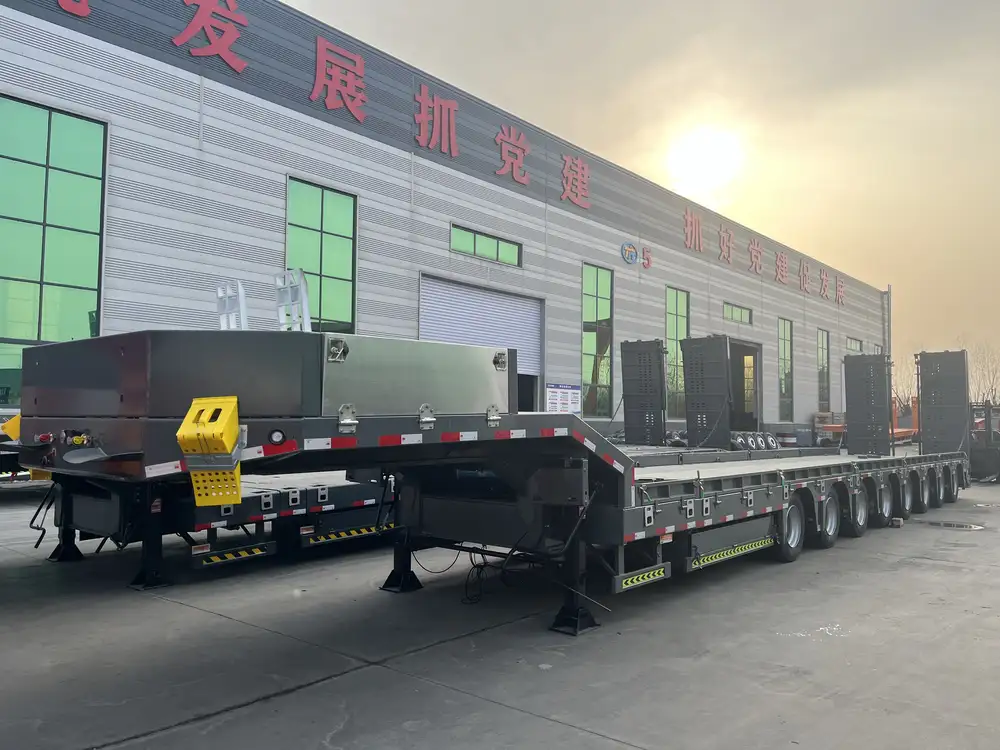In the realm of logistics and transportation, understanding the weight of a semi-trailer is pivotal. This essential knowledge not only affects compliance with regulations but also optimizes operations, enhances safety, and ultimately impacts your bottom line. In this comprehensive guide, we will dissect various dimensions of semi-trailer weights, focusing on factors influencing these weights, typical weight ranges, regulatory implications, and considerations for manufacturers and fleet operators.
What Determines the Weight of a Semi-Trailer?
The weight of a semi-trailer is influenced by several variables. Let’s inspect these factors in detail:
| Factor | Description |
|---|---|
| Design Type | Flatbed, dryvan, refrigerated, etc. Each design has different structural components affecting weight. |
| Materials Used | Aluminum, steel, and composite materials contribute to different weight profiles. Aluminum is lighter but may have different cost implications. |
| Payload Capacity | The design and intended use of the trailer significantly influence how much weight it can carry safely. |
| Axles and Suspension | The configuration (single, tandem, tri-axle) and type of suspension system can affect overall weight. |
| Additional Equipment | Features like aerodynamics kits, side skirts, and integrated technology can add weight as well. |
Types of Semi-Trailers and Their Weights
Semi-trailers come in various designs, each serving a unique purpose. Here’s a look at some common types along with their approximate weights:
| Type of Semi-Trailer | Weight Range (Empty) | Payload Capacity |
|---|---|---|
| Flatbed | 4,000 – 10,000 lbs | 48,000 – 52,000 lbs |
| Dry Van | 10,000 – 15,000 lbs | 45,000 – 50,000 lbs |
| Refrigerated | 12,000 – 15,000 lbs | 40,000 – 45,000 lbs |
| Tanker | 15,000 – 20,000 lbs | 40,000 – 45,000 lbs |
| Curtain Side | 10,000 – 12,000 lbs | 43,000 – 45,000 lbs |
| Specialty Trailers | Varies significantly | Varies significantly |

Typical Weight Ranges for Common Semi-Trailer Types
Understanding the weight dynamics of each trailer type can assist in efficient load management. Below, we delve further into specific trailer types with more detail:
Flatbed Trailers: These trailers, devoid of sides or a roof, typically weigh between 4,000 to 10,000 lbs, depending on their size and material composition. Flatbeds are widely utilized for transporting oversized loads, such as construction equipment and lumber.
Dry Van Trailers: Commonly used for freight transport, dry vans usually weigh between 10,000 and 15,000 lbs. They provide a closed space, protecting cargo from the elements while facilitating efficient loading and unloading.
Refrigerated Trailers: Designed to transport temperature-sensitive goods, refrigerated trailers often weigh slightly more due to insulation and refrigeration equipment—generally ranging from 12,000 to 15,000 lbs. Maintaining the right temperature is critical, making weight management essential.
Tanker Trailers: These heavy-weight trailers, primarily used for transporting liquids such as fuel or chemicals, typically weigh between 15,000 and 20,000 lbs when empty. The material type (aluminum vs. steel), size, and configuration significantly influence their weight.
Curtain Side Trailers: With a flexible tarp covering that provides both accessibility and protection, curtain-side trailers can weigh from 10,000 to 12,000 lbs while holding a similar payload capacity to dry vans.
Federal and State Weight Regulations
Understanding weight regulations is critical for transport compliance and safety:
Gross Vehicle Weight Rating (GVWR): This rating indicates the maximum loaded weight a vehicle can safely carry, including both the vehicle and its trailer(s). Most semi-trucks have a GVWR between 80,000 and 90,000 lbs, with specific limits set by state regulations.
Axle Weight Limits: Different states impose axle weight restrictions, typically based on the number of axles the trailer possesses. A general guideline is a maximum of 20,000 lbs per single axle and 34,000 lbs for tandem axles.
Bridge Formula: States follow the Bridge Formula to determine the maximum weight that can be imposed on bridges and road structures, ensuring safety. The formula considers the number of axles and their spacing for weight distribution.
Importance of Compliance
Adherence to weight regulations is not merely bureaucratic diligence; violations can incur hefty fines, impose vehicle restrictions, or even lead to vehicle impoundment. Moreover, compliance promotes road safety and reduces the wear and tear on infrastructure.

Calculating Total Weight: A Critical Skill
To sustain operational efficiency and compliance, knowing how to calculate your total weight, including the semi-trailer, tractor, and payload, is essential. Here’s a simple formula:
[ \text{Total Weight} = \text{Truck Weight} + \text{Trailer Weight} + \text{Payload Weight} ]Let’s examine a concrete application:
- Truck Weight: 20,000 lbs
- Trailer Weight: 15,000 lbs
- Payload Weight: 45,000 lbs
Understanding this total weight ensures compliance with highway regulations and allows for efficient load management.
Tricks for Managing Weights
Maximizing payload while remaining compliant is a balancing act. Here are strategies to consider:
Utilize Lightweight Materials: Invest in trailers made from lightweight yet durable materials, such as aluminum or specialized composites. This reduces empty weight, allowing you to maximize your payload.
Optimize Load Distribution: Uneven weight distribution can result in axle overloading, leading to fines and increased risk for the driver. Use load distribution techniques to mitigate this risk.
Maintain Equipment Regularly: Regular maintenance keeps your trailer in optimal shape, ensuring that you’re not carrying excess weight due to damaged components.
Track Your Weights: Invest in weight management systems or apps that help track total weight, making compliance easier and enhancing operational efficiency.
Conclusion: The Weight of Knowledge
In summary, grasping the intricacies of what semi-trailers weigh is foundational to successful transportation management. Armed with knowledge about weight dynamics, regulatory compliance, and effective weight management strategies, manufacturers and fleet operators can enhance their operational efficiencies significantly. The specifics of semi-trailer weights may seem intricate at first glance, but this complexity opens doors to optimization opportunities and informed decision-making.
As the logistics landscape continues to evolve with advancements in technology and materials, staying informed about semi-trailer weights will continue to be a necessary endeavor, ensuring safety, compliance, and efficiency in every haul.



